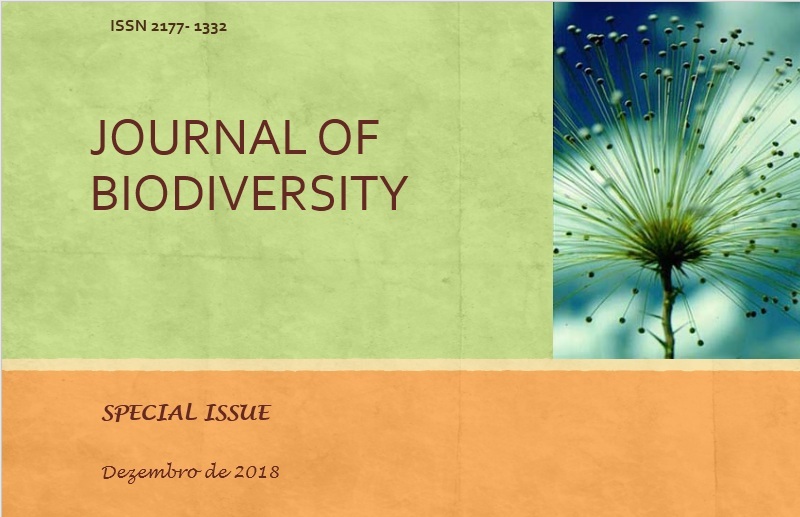DIVERSITY OF CURCULIONIDAE (COLEOPTERA) IN FORESTED SAVANNA FRAGMENT IN THE URBAN PERIMETER OF CUIABÁ-MT
Resumo
The Curculionidae family presents a close relationship to its food resources and importance as primary decomposers in forest ecosystems. This research aimed to analyze the occurrence and diversity of this family in a fragmented forest savanna environment within the city of Cuiabá-MT. In this work, 18 pitfall traps were randomly arranged. The treatments used were different concentrations of ethanol (20º, 40º, 60º, 80º and 92,8º INPM), balanced from 92.8º INPM ethyl alcohol and control traps with only water + salt + neutral detergent. The collections were carried out biweekly, from January to December 2013. A total of 8,968 individuals of the Curculionidae family were collected, distributed in eight genera and 14 species belonging to the subfamilies Platypodinae, Cryptorhynchinae, Molytinae and Scolytinae, the latter being richest in species (10). Xyleborus affinis showed dominance and abundance over the other species collected, with a percentage of 93.24%. The dry season presented 6,708 individuals collected, corresponding to 74.80%. Among the treatments containing ethanol as an attractive, the 60º INPM concentration was the one with the highest number of species collected (10), presenting a higher diversity of species, as well as lower dominance. As most Curculionidae occurred in the dry period, this indicates that rainfall is a population regulator of these insects.
Keywords: Savanna, monitoring, pitfall, weevils, wood-boring beetles.




